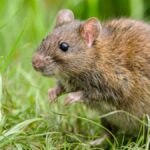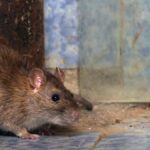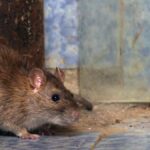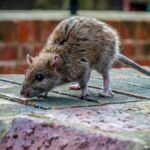As you embark on the quest to protect your yard and trash from unwelcome visitors, understanding the adversary is key.
Norway rats, much larger and more audacious than their cousins, house mice, won’t hesitate to claim your property as their own if given the chance.
Sporting brown or gray coats and lengthy tails, these robust rodents can weigh around a pound with bodies stretching up to 10 inches.
Unlike the deft climbers, house mice, Norway rats are ground dwellers, often seeking refuge in lower levels of structures and outdoor spaces.
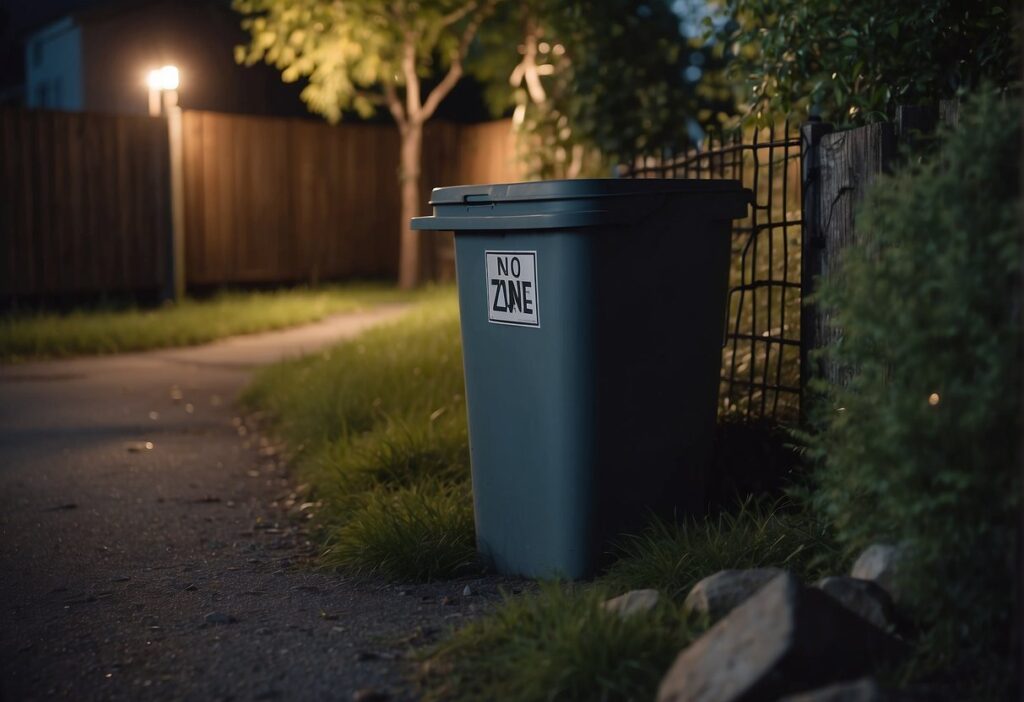
One of your first lines of defense is to secure food sources these nocturnal nuisances can’t resist.
Tight-fitting lids and latches on outdoor garbage cans and compost bins are essential.
Not only do these preventatives safeguard your leftovers from becoming a rat feast, but they also significantly curb the allure of your yard as a rat residence.
By eliminating easy food access, you signal that your property won’t support their scavenging lifestyle.
Around your home, vigilance in maintaining the landscape can disrupt potential rat havens.
Keeping an eye out for telltale signs like gnawing or digging is crucial.
Remove the welcome mat by clearing away cozy nesting sites such as disorganized woodpiles, dense shrubbery, and clutter around sheds.
Decluttering these areas discourages Norway rats from settling in and turning your outdoor haven into their home.
Identifying Norway Rats
When it comes to differentiating between Norway rats and other common rodents, like house mice, you’ll notice significant differences, not only in size but also in their physical and behavioral characteristics. Let’s take a closer look.
Physical Characteristics
Norway rats, your unwelcome yard visitors, boast a larger physique compared to the diminutive house mouse. Adults often span around 16 inches from nose to the tip of their scaly tails, and they can weigh approximately a pound, which is notably heavier than house mice.
The fur of Norway rats is coarse and usually brown or gray, which helps them blend into urban and suburban environments. Their fur lightens towards the underside.
If you spot them, you’ll notice their small ears and eyes—small in proportion to their body size.
Additionally, unlike their arboreal relatives, these ground-dwellers have tails shorter than the length of their bodies.
Behavioral Traits
Behaviorally, Norway rats are less shy than their smaller rodent cousins.
If you discover gnaw marks on materials or structures, it’s a tell-tale sign of their presence.
Norway rats leave behind larger droppings, which are blunt at the ends, as further evidence of their activity.
Knowing their identification marks is key to managing an infestation.
They’re not particularly good climbers but are adept swimmers and diggers, so if you see damage near water sources or burrows, it may point to a Norway rat problem.
Preventing Infestations
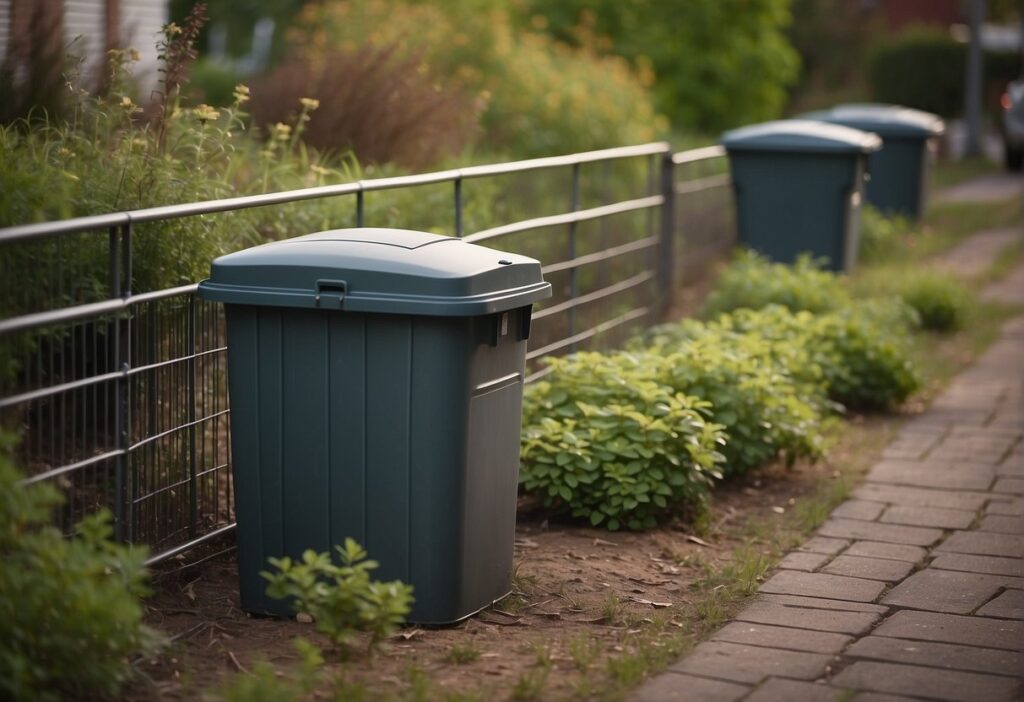
When you’re dealing with Norway rats, proactive prevention is crucial to keep these pests from making your yard their home.
Unlike smaller house mice, Norway rats have bigger bodies and more audacious behaviors, which can lead to larger and more challenging infestations. Here are specific steps to secure your food sources and maintain outdoor spaces.
Securing Food Sources
Garbage Cans and Compost Bins: Ensure that your garbage cans and compost bins are well-secured with tight-fitting lids and latches.
Norway rats are attracted to these food sources, and preventing their access is key to avoidance.
Consider using metal containers with locking lids, as these are tougher for rats to gnaw through.
- Pet Food: Keep pet food in heavy-duty containers with secure lids, preferably inside your home or garage. Do not leave pet food outside overnight as it attracts Norway rats.
Sanitation Tips: Regular sanitation efforts can dissuade rats from settling in.
Remove leftover food and fallen fruits or vegetables in your garden immediately, and clean up any spills around your trash areas promptly.
- Ensure that your bins are emptied on a regular schedule.
- Bait Stations: If needed, professionally managed bait stations can be a line of defense.
- These should be placed by a licensed pest control expert to prevent accidental exposure to pets and other wildlife.
Maintaining Outdoor Spaces
Eliminating Debris: Norway rats look for cozy nesting sites such as piles of debris.
Keep your yard tidy by removing piles of lumber, old furniture, and other clutter where rats can hide.
- Regular Inspection: Periodically inspect the perimeter of your home, shed, and other structures for holes or gaps.
- Fill any openings with caulk or an appropriate filler material to deny entry to these persistent intruders.
Woodpile Storage: If you store firewood, do so neatly and off the ground. This will minimize hiding spots and potential nesting areas for Norway rats.
- Trimming Vegetation: Overgrown vegetation provides cover for rats.
- Keep shrubs and tree branches trimmed away from your house to deter climbing and nesting in the foliage near your home.
Securing Your Home and Yard
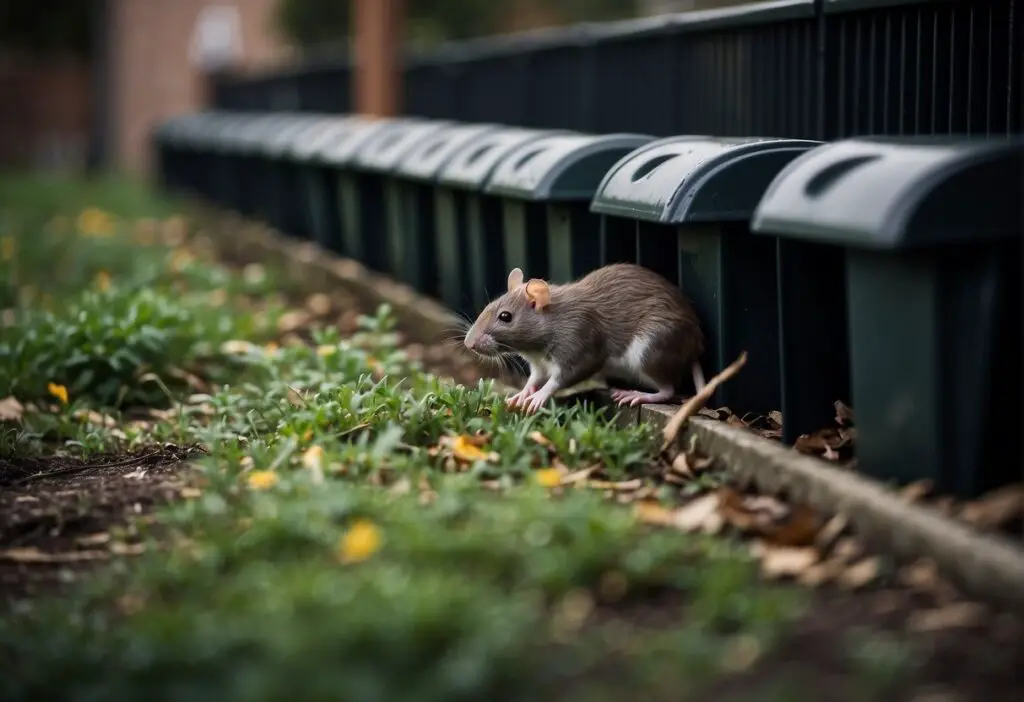
Ensuring that your yard isn’t a welcome mat for Norway rats means focusing on sanitation and fortification against these bolder, larger rodents.
They seek out the warmth and potential food sources your property offers, which makes trash and compost management, along with securing entry points, your top priorities.
Trash and Compost Management
Garbage Cans: Robust and secure garbage cans are essential in preventing Norway rat infestations.
Opt for cans with tight-fitting lids and latches to discourage these nocturnal nuisances.
Regularly inspect the cans for any signs of gnawing or damage, and replace compromised bins promptly.
- Compost Bins: Composting is great for the environment, but it can attract Norway rats.
- Ensure your compost bins are equally secure with tight lids, ideally made from heavy materials like metal or thick plastic. Turning the compost frequently can also deter rats from settling.
Addressing Entry Points
Doors and Windows: Examine all your doors and windows for gaps or holes. Even a small opening can be an invitation to a curious Norway rat.
Using mesh screens or door sweeps can provide an added layer of protection without compromising your home’s accessibility.
- Exclusion Techniques: Concrete mortar and heavy-duty materials like 24-gauge galvanized sheet metal or 18-gauge hardware cloth are your best friends when it comes to sealing holes around the home.
- Look out for potential entry points near sheds, woodpiles, and similar structures. Patch any openings larger than ½ inch to keep rats out.
Control and Removal Tactics
Effective control and removal tactics are crucial for dealing with Norway rats.
These rodents are not only larger and bolder than house mice but also more challenging to manage.
Your approach to removal should be proactive, carefully planned, and executed with the right tools and expertise.
Trapping
Trapping is a highly effective method to control Norway rat populations in your vicinity.
Start by identifying the active areas where you have noticed signs of rat activity. Once known, set up snap traps, which should be baited with enticing food like peanut butter or bacon.
Position these traps along walls or near their burrows, as Norway rats typically follow the same paths.
Alternatively, live traps offer a humane solution, though they require you to release the captured rats far from your home.
Always wear gloves when handling traps to prevent your scent from deterring the rats.
For safety and effectiveness, visit How to Get Rid of Norway Rats for a comprehensive overview.
Professional Solutions
Sometimes, the extent of a Norway rat infestation necessitates the expertise of professional pest control services like Orkin.
Licensed pest control professionals can offer comprehensive solutions, such as bait stations, which are strategically placed around your property and are safe to use around children and pets.
They have the training and tools to tackle large or difficult infestations, ensuring that the control measures are as effective and humane as possible.
If you’re feeling overwhelmed, don’t hesitate to secure professional help to get rid of Norway rats and protect your home.
Understanding the Risks
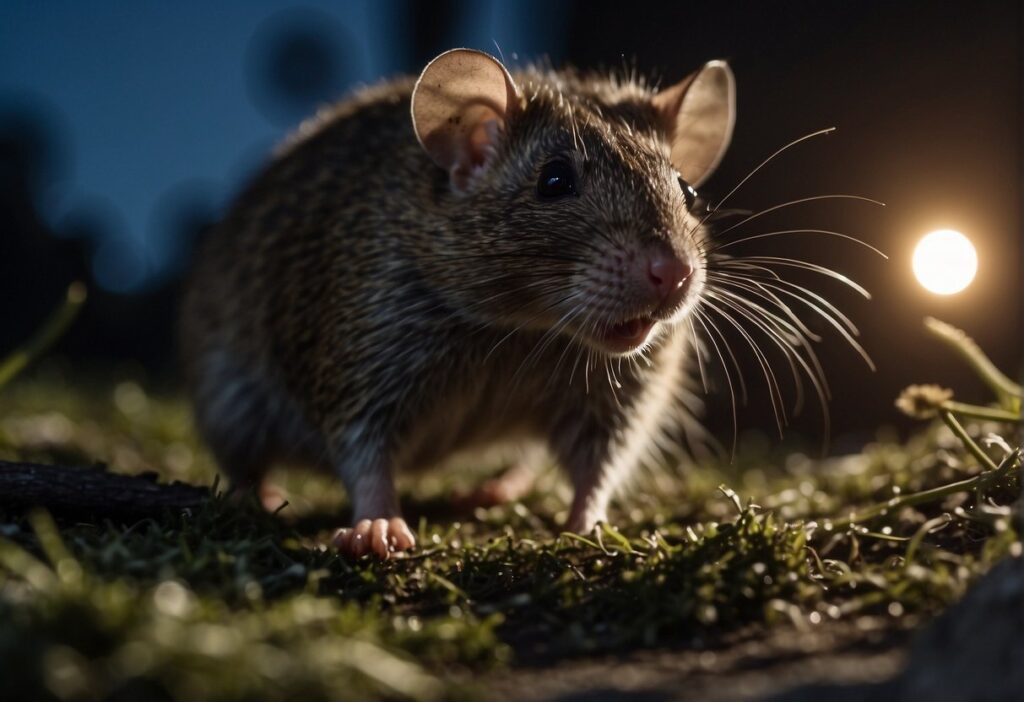
When it comes to dealing with Norway rats, it’s crucial for you to understand the risks they pose, both to your health and your property. Being mindful of these risks can help you take proactive steps to prevent an infestation.
Diseases and Health Concerns
Norway rats are notorious carriers of various diseases that can affect you and your family.
Rats can spread illnesses directly by contaminating food with their urine or feces, or indirectly through ticks, mites, and fleas that have fed on an infected rat. Two significant health concerns include:
- Rat-bite fever: A bacterial illness that can be transmitted by bites or scratches from infected rodents, or when handling a rodent carrying the bacteria.
- Salmonellosis: Often linked to rat infestations, this type of food poisoning can occur when you consume food or water contaminated with rat feces.
Property Damage
In addition to health risks, Norway rats pose a serious threat to your property.
- Structural: Rats instinctively gnaw to keep their incisors sharp, potentially harming wooden structures, pipes, and even electrical wiring in your attic or basements.
- Belongings: Storage areas with items like boxes and fabrics can become nesting sites, leading to destroyed personal property.
Remember, tackling the problem early can save you from the greater hassles of dealing with a full-blown rodent infestation.




